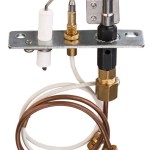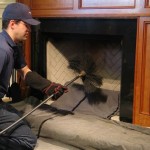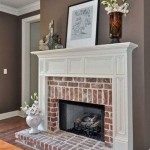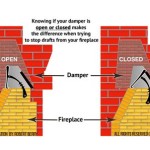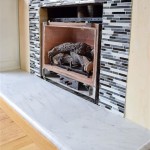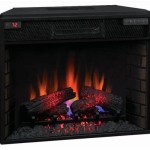How To Paint Polished Brass Fireplace Doors
Polished brass fireplace doors can become dated or clash with evolving interior design aesthetics. Painting them offers a cost-effective alternative to replacement, allowing homeowners to update their fireplaces and integrate them seamlessly into current decorating schemes. However, successful painting of polished brass requires meticulous preparation, the selection of appropriate materials, and the application of proper techniques to ensure adhesion and a durable finish. This article provides a detailed guide on how to effectively paint polished brass fireplace doors, maximizing both aesthetic appeal and longevity.
The inherent challenge in painting brass stems from its smooth, non-porous surface. Standard paints will struggle to adhere, leading to chipping, peeling, and an ultimately unsatisfactory outcome. Adequate preparation is critical for creating a surface that paint can successfully bond with. This preparation involves thorough cleaning, degreasing, and application of a primer specifically designed for non-ferrous metals.
Key Point 1: Preparation – The Foundation of a Lasting Finish
Effective preparation is the most crucial aspect of painting polished brass. Neglecting this step will almost certainly result in paint failure, regardless of the quality of the paint used. The preparation process comprises several stages, each designed to remove contaminants and create a receptive surface for the primer.
The first step is to carefully remove the fireplace doors from the firebox. This usually involves unscrewing or unhinging the doors. Ensure the area is well-ventilated.
Next, thoroughly clean the doors using a strong degreasing cleaner, such as trisodium phosphate (TSP) or a commercially available degreaser. Follow the manufacturer's instructions for dilution and application. Use a scrub brush or abrasive pad to remove any dirt, grease, or residue that may have accumulated on the brass surface over time. Rinse the doors thoroughly with clean water and allow them to dry completely.
Once the doors are dry, lightly sand the surface using fine-grit sandpaper, typically 220-grit or higher. The purpose of sanding is not to remove the brass finish entirely, but rather to create a slightly abraded surface that will improve adhesion. Sand evenly, applying light pressure, and avoid scratching or gouging the metal. After sanding, remove all sanding dust with a tack cloth or a damp cloth. Ensure the doors are completely dry before proceeding.
After sanding, apply a thin coat of a metal etching primer. This type of primer is specifically formulated to bond to smooth, non-porous metal surfaces like brass. It contains chemicals that subtly etch the metal, creating microscopic grooves into which the primer can anchor. Follow the manufacturer's instructions for application and drying time. Typically, two thin coats of primer are preferable to one thick coat. Allow each coat to dry completely before applying the next. Using a quality brush or spray gun will ensure an even and smooth application.
The choice of primer is critical. Select a self-etching primer specifically designed for non-ferrous metals. Generic primers will not provide adequate adhesion and are likely to fail over time. Consult with a paint specialist at a reputable hardware store to ensure you choose the appropriate primer for your specific project.
Key Point 2: Paint Selection – Choosing the Right Product
Selecting the correct paint is another crucial step in achieving a durable and aesthetically pleasing finish on polished brass fireplace doors. The paint must not only be compatible with the primer used but also be able to withstand the heat generated by the fireplace.
High-heat paint is essential for this application. Standard paints will blister, peel, or discolor when exposed to the temperatures produced by a fireplace. High-heat paints are formulated with pigments and resins that can withstand temperatures of up to 1200°F (650°C), depending on the specific product. These paints come in various sheens, from matte to gloss, allowing you to customize the appearance of your fireplace doors.
Consider using a spray paint specifically designed for high-heat applications. Spray paints generally provide a smoother and more even finish than brush-on paints, especially on intricate surfaces. If using a brush-on paint, choose a high-quality brush designed for use with the selected paint type. Avoid using foam brushes, as they tend to leave behind air bubbles. Apply thin, even coats, allowing each coat to dry completely before applying the next.
When choosing a paint color, consider the overall style of your room and the existing fireplace surround. Neutral colors like black, gray, or bronze are often popular choices, as they tend to complement a wide range of decorating styles. However, don't be afraid to experiment with bolder colors if you want to create a more dramatic statement. Always test the paint color on a small, inconspicuous area before applying it to the entire surface.
Before painting, always read and follow the manufacturer's instructions for the selected paint. This includes information on drying times, application techniques, and safety precautions. Work in a well-ventilated area and wear appropriate protective gear, such as a respirator or mask, gloves, and eye protection.
For optimal durability, consider applying multiple thin coats of paint rather than one thick coat. This will help to prevent drips, runs, and other imperfections. Allow each coat to dry completely before applying the next. Lightly sanding between coats with very fine-grit sandpaper (400-grit or higher) can further improve the smoothness and adhesion of the finish.
Key Point 3: Application and Curing – Ensuring a Professional Finish
The application process and proper curing of the paint are critical for achieving a professional and durable finish on polished brass fireplace doors. Rushing these steps can compromise the integrity of the paint and lead to premature failure.
Before painting, ensure the work area is clean and free of dust or debris. Cover surrounding surfaces with drop cloths or plastic sheeting to protect them from overspray. If using spray paint, practice your technique on a scrap piece of cardboard or metal to get a feel for the spray pattern and distance.
When applying the paint, hold the spray can or brush at a consistent distance from the surface, typically 8-12 inches for spray paint. Use smooth, even strokes, overlapping each stroke slightly to ensure complete coverage. Avoid applying too much paint in one area, as this can lead to drips and runs.
If using a brush, load the brush with a moderate amount of paint and apply it in long, even strokes, following the grain of the metal (if any). Avoid pressing too hard, as this can cause brush marks. If you do see brush marks, you can try to smooth them out with a clean, dry brush before the paint dries.
After applying the final coat of paint, allow the doors to dry completely, following the manufacturer's instructions. This may take several hours or even overnight, depending on the type of paint used and the ambient temperature and humidity. Avoid touching the doors during the drying process, as this can leave fingerprints or other imperfections.
Once the paint is dry, the doors need to be cured. Curing involves allowing the paint to fully harden and bond to the surface over a longer period. Some high-heat paints require heat curing. This involves gradually increasing the temperature of the doors to the recommended level, typically by running the fireplace for short periods. Follow the manufacturer's instructions for heat curing carefully, as overheating the doors can damage the paint.
Even if the paint does not require heat curing, it is still important to allow it to fully cure before reinstalling the doors and using the fireplace. This may take several days or even weeks, depending on the type of paint used. During this time, avoid exposing the doors to moisture or extreme temperatures.
After the paint has fully cured, carefully inspect the doors for any imperfections. If you find any, you can lightly sand the affected area with very fine-grit sandpaper and touch it up with a small amount of paint. Once you are satisfied with the finish, carefully reinstall the doors on the fireplace.
Regular cleaning with a soft cloth will help to maintain the appearance of the painted fireplace doors. Avoid using harsh chemicals or abrasive cleaners, as these can damage the paint. With proper care and maintenance, the painted fireplace doors will provide years of beauty and functionality.
By adhering to these preparation, selection, and application guidelines, homeowners can effectively paint their polished brass fireplace doors, transforming their appearance and seamlessly integrating them into their desired interior design scheme. The result is a cost-effective and satisfying way to update a fireplace and revitalize a living space.

Fireplace Door Update With Spray Paint Roots Wings Furniture Llc

How To Spray Paint A Brass Fireplace Insert Erfly House

How To Spray Paint A Brass Fireplace Insert Erfly House

How To Paint Metal Fireplace Surround Four Generations One Roof

Painted Fireplace Doors 6 Steps With S Instructables

How To Spray Paint A Brass Fireplace Insert Erfly House

Easily Update Your Brass Fireplace Within The Grove

How To Spray Paint A Brass Fireplace Bright Green Door

Fireplace Door Update With Spray Paint Roots Wings Furniture Llc

Brass Fireplace Update East Coast Creative
Related Posts

